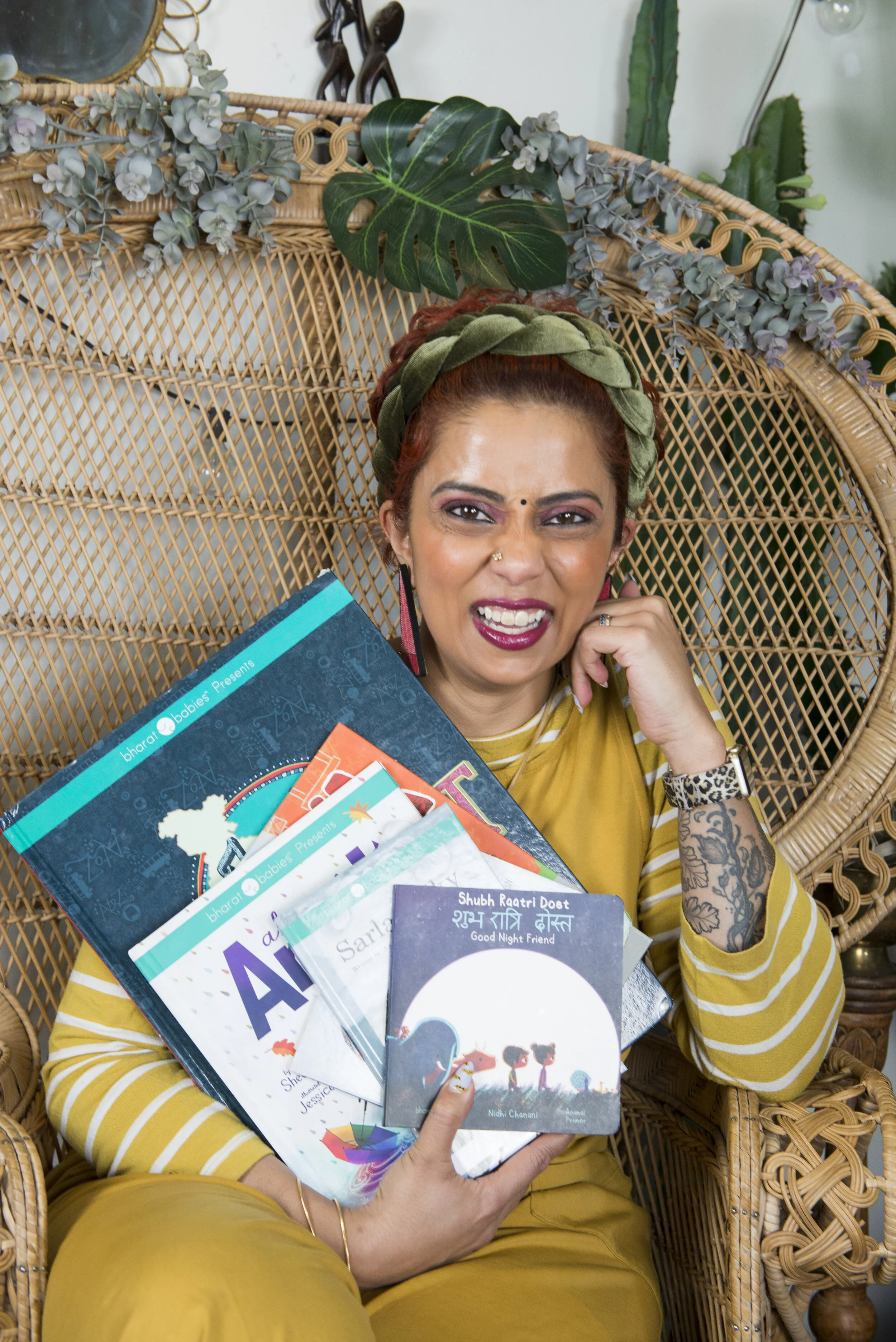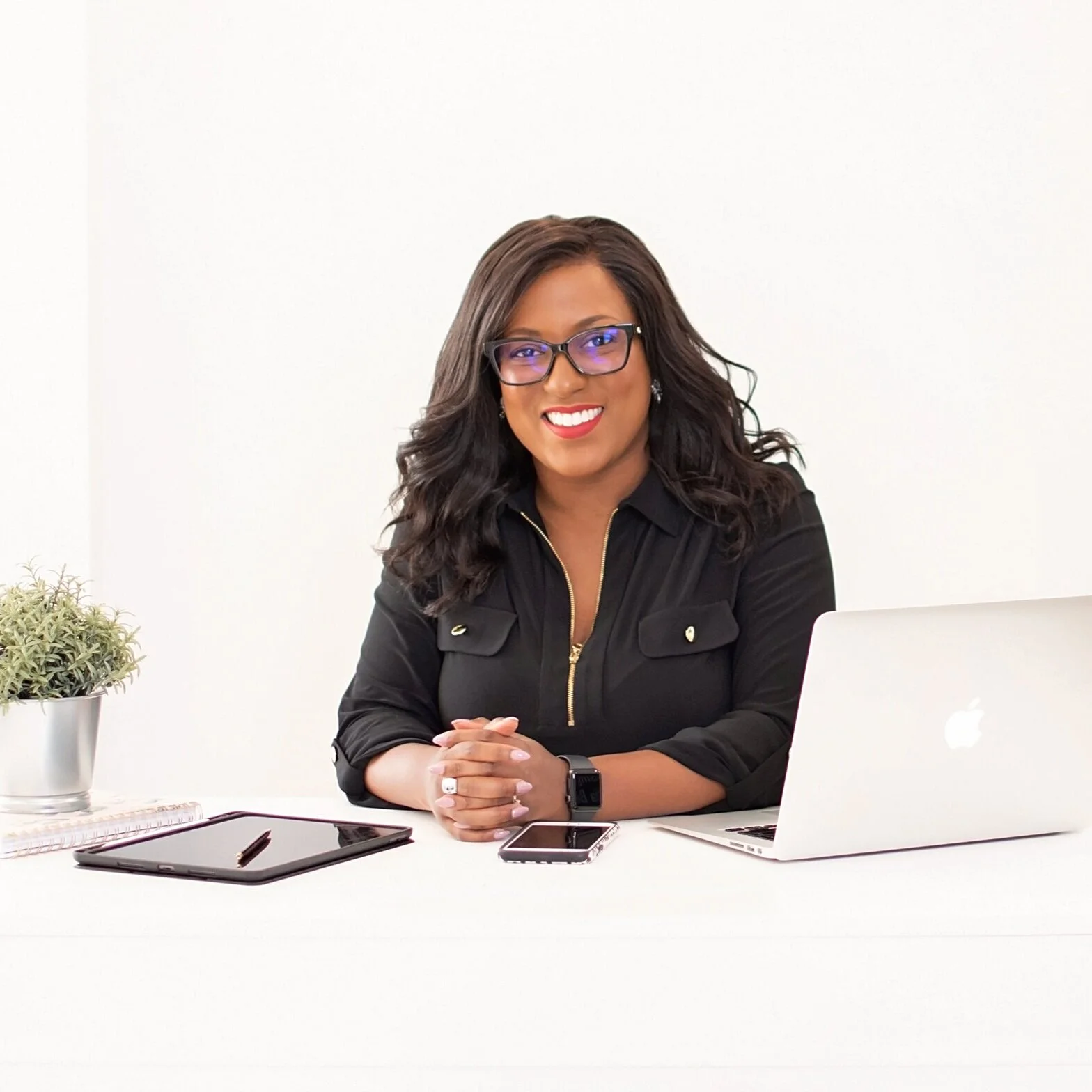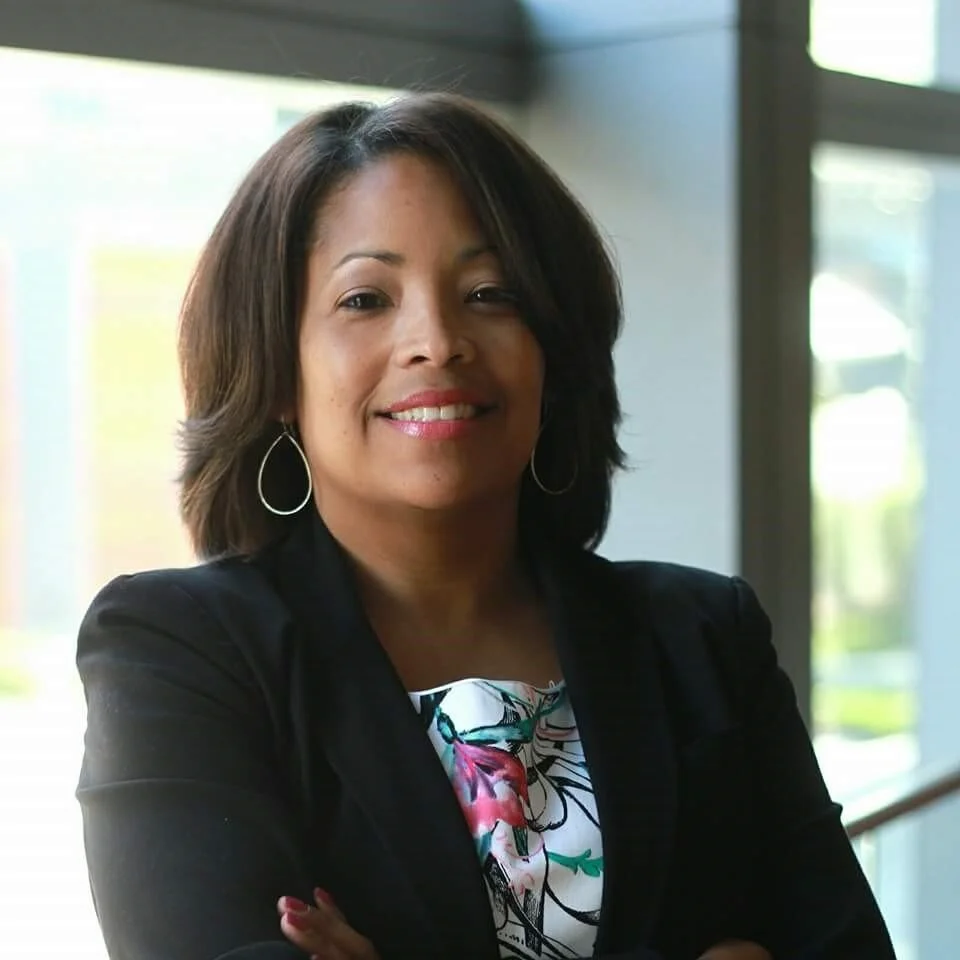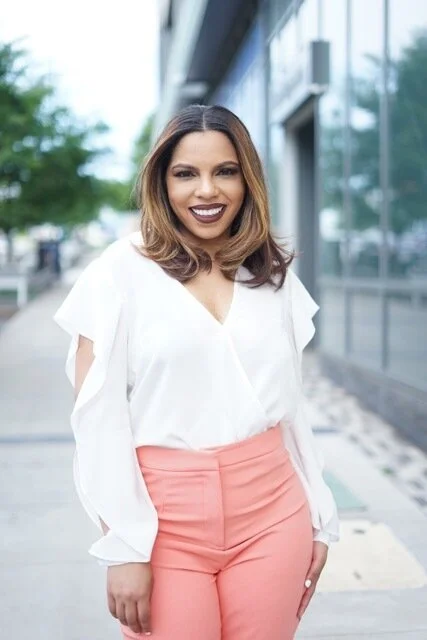For seven years, the State of Latino Entrepreneurship Report has listed Latino-founded companies as “the fastest growing segment of the U.S. business population.” In 2018, findings indicated that Latino-owned businesses generated more than $460 billion in annual revenue while employing 2.9 million people.
According to the 2021 report, Latino-owned businesses are employing 55% more people than in 2007—compared to an 8% increase in employees at white-owned companies. Undoubtedly, Latinas are playing a strong roll in these favorable numbers.
In fact, over the last five years, 46% more Latinas have launched a business. Since 2007, the number of Latina-owned businesses in the U.S. rose to over two million, a growth of more than 87%. And it’s about high time these entrepreneurs and their businesses get the attention they deserve.
Here, we’re doing just that by focusing on these categories:
Keep reading to see the 35 strong Latinas who are blazing the trails for generations to come.
Beauty
Carolina Contreras, Founder of Miss Rizos
Identifying and impacted by a gap in the curly hair care market, Contreras set out to launch Miss Rizos (Spanish for curls) to fill it. Now, she’s grown it to a multi-national business with a salon open in her native Dominican Republic, which also sells apparel.
Follow her on Instagram.
Shop apparel here.
With a strong following of 1 million, Maya has established herself as a force to be reckoned with in the beauty industry. Her line, Birdy Lashes and Beauty, is vegan, cruelty-free, and features liquid liner, in addition to false lashes and adhesives.
Follow her on Instagram.
Check out her lashes.
Through faith and hard work, Guerrero's vision of a high quality, head-to-toe skincare brand has fully come into fruition. She founded Brujia Skincare in 2017 and in five years has grown it to offer makeup, facial cleansers, lip balms, and even candles.
Follow her on Instagram.
Shop skincare here.
Prado, a curly-haired Latina with Mexican roots, wanted to create something for women like her—and she did just that with Rizos Curls. The line offers anything a curly girl might need, like hair products, diffusers, and brushes.
Follow her on Instagram.
Shop her products here.
In today’s saturated market, it’s hard to know which skincare brands you can actually trust. In Nopalera, Velasquez has created a trustworthy and Nordstrom-carried brand, and found a way to ensure that folks know Latin American hands can, and do, make luxury products.
Follow her on Instagram.
Shop soaps, scrubs, and other goodies here.
Because Vida Bars are shampoos and conditioners that come in bar form, they’re a great eco-friendly option when it comes to haircare. Nuñez spent her entire adult life fighting her curly hair, a fact which she credits to society’s focus on taming and smoothing our strands.
Follow her on Instagram.
Shop Vida Bars here.
Vargas sees herself as a strong, Latina, female founder. She’s a big name in the beauty industry and often attributes her love of beauty and, in true Latinx fashion, says that her passion for skincare was sparked by her grandmother.
Follow her on Instagram.
Shop her line here.
Finance
Chesnok is a financial expert based in Miami whose sole mission is to help her “amigas (girlfriends) get rich.” She offers helpful advice for upping your financial game—including her list of 50 side hustles and ways to make passive income. Her efforts to support Latinx communities have been featured on CNBC, Time, and Univision.
Follow her on Instagram.
Subscribe to her blog here.
A financial educator, speaker, and money coach, Gonzalez is the light at the end of the tunnel, for many first-generation Latinas navigating life away from their ancestral country. With almost 200k followers on TikTok, it’s clear that her efforts and teachings are making a large and necessary impact.
Follow her on Instagram.
Sign up for her Investing for First Gen Wealth Builders course.
Taveras is an award-winning, Latina, personal finance expert. In a 2020 tweet, she thanked her supporters for getting her nominated for not one, or two, or three, but four Plutus Awards—which she referred to as “the Oscars of personal finance.” Among others, she won the 2021 award for "Best Personal Finance Content for Underserved Communities."
Follow her on Instagram.
Sign up for her introduction to investing workshop here.
In seven years, García turned $7,200 into $400,000+ (and counting) in the stock market—now she’s helping BIPOC communities to do the same. Through In Luz (Light) We Trust, she creates programs and workshops to teach people how to build generational wealth by investing in the stock market.
Follow her on Instagram.
Enroll in her stock market deep-dive program here.
From her Instagram posts, her supporters can tell that Torres is living her best life. The Puerto Rican, personal finance expert has become work-optional, meaning she doesn’t work because she has to, but because she wants to. She is providing a blueprint for other Latinas to do the same through one-on-one coaching and workshops.
Follow her on Instagram.
Listen to her podcast here.
Food and Drink
With the recent spa water scandal, which saw the cultural appropriation of Latinx beverages known as aguas frescas, it’s refreshing to know that Castañeda's business exists. Agua Bonita produces canned, semi-sweet aguas frescas in classic flavors like agua de jamaica (hibiscus tea) and sandía (watermelon).
Follow her on Instagram.
Add some aguas frescas to your cart here.
The name of Garza's brand is an homage to the number of members in her family: siete, which is the Spanish term for seven. With Mexican American and South Texan roots, food often brought her family together. Through Siete Foods, she’s making space for more Latinx folks at the table.
Follow her on Instagram.
Get a taste of the brand here.
Garcia is a certified natural foods chef and holistic health coach. She’s been featured on Thrillist for her cooking classes, which look to ancestral nutrition as inspiration. She’s also part owner of Loisa, a brand that provides classic Latinx spices and kitchen tools—like a tostonera, which is used to smash plantains.
Follow her on Instagram.
Shop Loisa here.
A Dominican with strong ties to her culture, Soto launched Your Latina Nutritionist to put an end to chronic dieting. Her threefold mission is simple: heal clients' relationship with food, help them find health, and teach them positive nutrition.
Follow her on Instagram.
Take her quiz here.
Lifestyle and Wellness
As a sex therapist and sexologist, Story is an expert in all things sex. She pooled that knowledge to launch the first sexual wellness brand to hit shelves at Target. Bloomi offers whatever one might need to set the mood for romance—including candles, massage oils, lubes, and sex toys.
Follow her on Instagram.
Shop sexual wellness products here.
Known to her close friends as Cyn, this Latina entrepreneur created a much-needed community for Salvadoreans in Los Angeles, where there’s a large, and often underrepresented, population. Through her venture, Gonzales hosts events designed to connect and empower the people who share her homeland.
Follow her on Instagram.
Preorder her new book here.
Karina Primelles, Co-Founder of Xula
Primelles co-founded Xula with her business partner Mennlay Golokeh Aggrey—making the brand a Latinx- and Black-owned business. The duo’s offerings include clinically-backed botanicals for all menstruators.
Follow her on Instagram.
Shop products here.
Cindy Luquin, MA, CSE, Founder of Sexual-Health Education Platform Pleasure to People
Luquin is a certified sexual health educator hailing from Guatemala. She's also proudly and openly bisexual. Luquin uses her platform to educate on sexual wellness, with short videos about the importance of foreplay, as well as certain STD prevention methods, like taking PrEP.
Learn more here.
Publishing and Marketing
When she was 19, Colombian American Pierson founded The Newsette, a wellness-focused newsletter company. Now, at 27, she’s worth $220 million—which makes her one of the wealthiest women of color on the planet. According to her feature on Forbes’ Billionaires section, she’s also “younger than just about any self-made female entrepreneur with a nine-figure fortune.”
Follow her on Instagram.
Subscribe to The Newsette here.
In the eight years since Rodriguez self-published her first Lil’ Libro, she’s turned it into a literary empire. The brand is an independent bilingual children's book publisher and has produced more than 65 books about Latinx icons including Selena, Celia Cruz, and Frida Kahlo.
Follow her on Instagram.
Shop Lil’ Libros here.
With Cuban ancestry, Martinez is a self-described Queer Latina, who’s the brains of the operation that is The Avana House—a public relations agency dedicated to amplifying Latinx voices and stories. She largely represents Latinx-founded brands to prevent the erasure or appropriation of our customs.
Follow her on Instagram.
Follow her company on Instagram here.
Eccleston built something amazing from the ground up: the first woman-led platform dedicated to analyzing and chronicling the history of reggeatón. She’s been tapped for her expertise by Teen Vogue as well as Univision, and was profiled by HuffPost.
Follow her on Instagram.
Shop her merch here.
If you ask Darton what she does, she’d respond, “I make things, connect people & take care of my son.” Through WORD Agency (the acronym standing for “we open real doors,”) she’s conceived an Afro Latina-owned, creative marketing agency, as well as a thriving community.
Follow her on Instagram.
Listen to her appearance on the Fun Forever podcast here.
Spirituality
Samantha Santiago, Manifestation Coach and Spiritual Guide
What exactly does a manifestation coach and spiritual guide do? Well, Santiago helps “Latinas and BIWOC reclaim their wildest dreams.” She does this by sharing vulnerable videos to Instagram—like this one about healing anxiety and depression—and offering one-on-one sessions.
Follow her on Instagram.
Book a yogic healing session here.
Afro-Dominican identical twins, the Rodriguez'—who each earned PhDs in social sciences—have been on the forefront of destigmatizing brujería and spiritual practices. As the Brujas of Brooklyn, the sisters blend their academic and spiritual knowledge to teach people how to be more in control.
Follow them on Instagram.
Explore their workshops here.
As a Guatemalan and Mexican woman, Hernandez embraces her Mayan culture as an important part of her identity. She uses her platform to help other folks embrace indigenous same practices.
Follow her on Instagram.
Buy her book here.
At the heart of Kim’s work as a healer is the premise of revolutionary self-love. She encourages people to accept the parts of themselves that they’ve previously shied away from, and instead use those emotions for good—like to achieve their personal and professional goals.
Follow her on Instagram.
Shop collections here.
Alex Naranjo and Marlene Vargas, Founders of House of Intuition
Naranjo and Vargas are a married couple who founded House of Intuition at a pivotal moment in their lives. Intimately familiar with the power of magic, they launched their brand to inspire others to tap into their own intuition, which they refer to as the source of their magic.
Follow them on Instagram.
Check out offerings here.
Jasmin Alejandrez-Prasad, aka Esoteric Esa, Astrologer, Numerologist, and Writer
Think of Alejandrez-Prasad as your esoteric homegirl. An astrologer and numerologist, she’s been quoted in Refinery29, Well+Good, and Bustle. She’s also a prolific writer with bylines in Cosmopolitan, Popsugar, and Hip Latina.
Follow her on Instagram.
Book a reading here.
A Mexican American astrologer, Campos has been tapped by Cosmpolitan, as well as Well+Good for her otherwordly intel. Her work for the former is a monthly horoscope while the latter sees a column devoted to horoscopes for new moons and full moons.
Follow her on Instagram.
Read her work here.
More Latinas to know
The largely-white, male-dominated tech industry can be an intimidating for Latinas who don’t quite fit that mold. In former times, someone like Gina might have not wanted to share her experiences in the field, fearing retaliation. But that made it all the more isolating and Moreno is creating content that reminds Latinas they’re not alone in their struggle.
Follow her on Instagram.
Read her helpful content here.
Literally, hija de tu madre translates to daughter of your mother—but that misses the nuance of this well-intentioned backhanded compliment. There isn’t a literal translation but the phrase is ofted used as a response to someone being sassy. In every sense of the word, Delgado centers Latinidad in her pieces. For instance, she offers gold-plated necklaces for basically every country in Latin America.
Follow her on Instagram.
Shop clothing here.
Ramirez-Fulton created Chillhouse to curate self-care treatments to ensure your vibe is, well, chill. On the website, users can shop myriad products for their next night in, like nail sets, apparel, candles, and face oils.
Follow her on Instagram.
Shop Chillhouse here.
Written by: Natalie Arroyo Camacho














